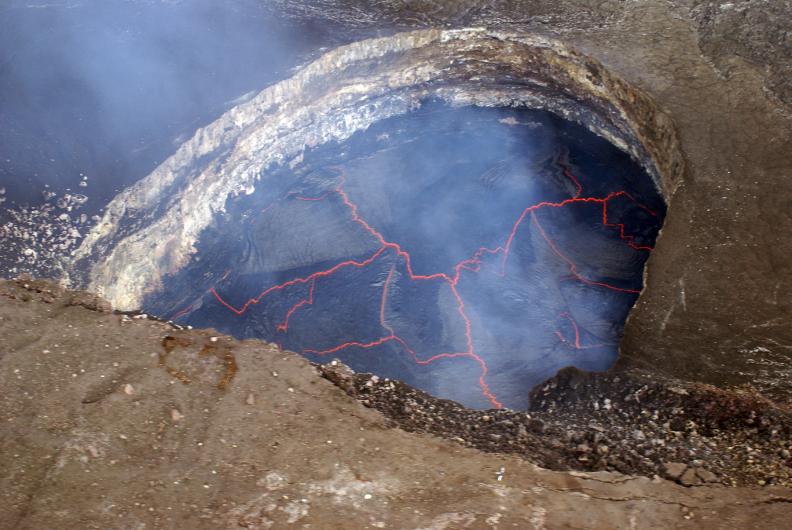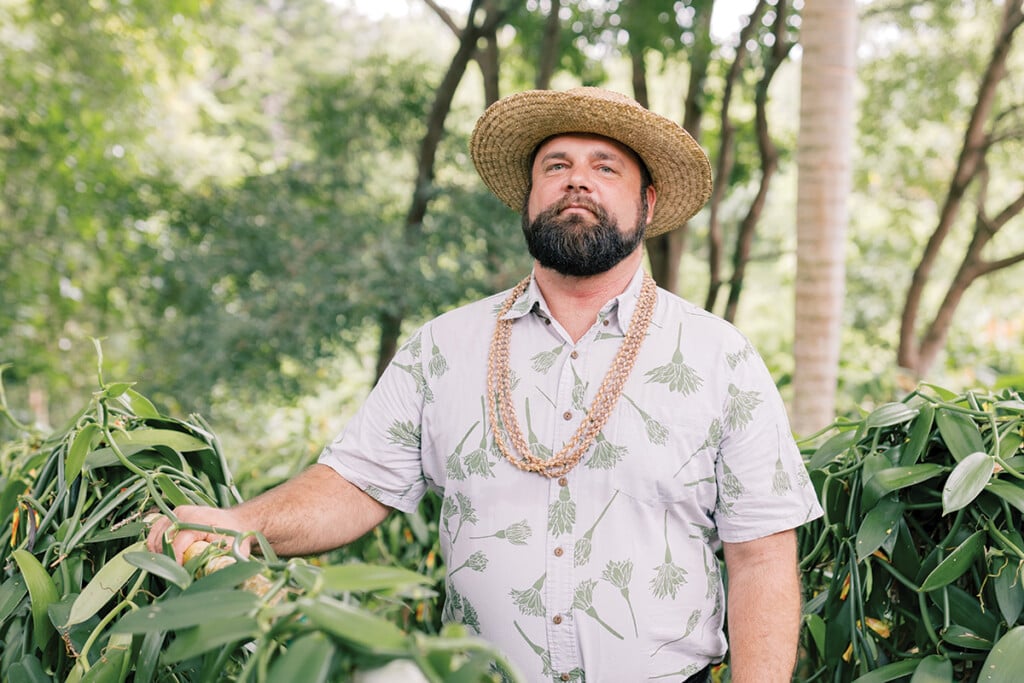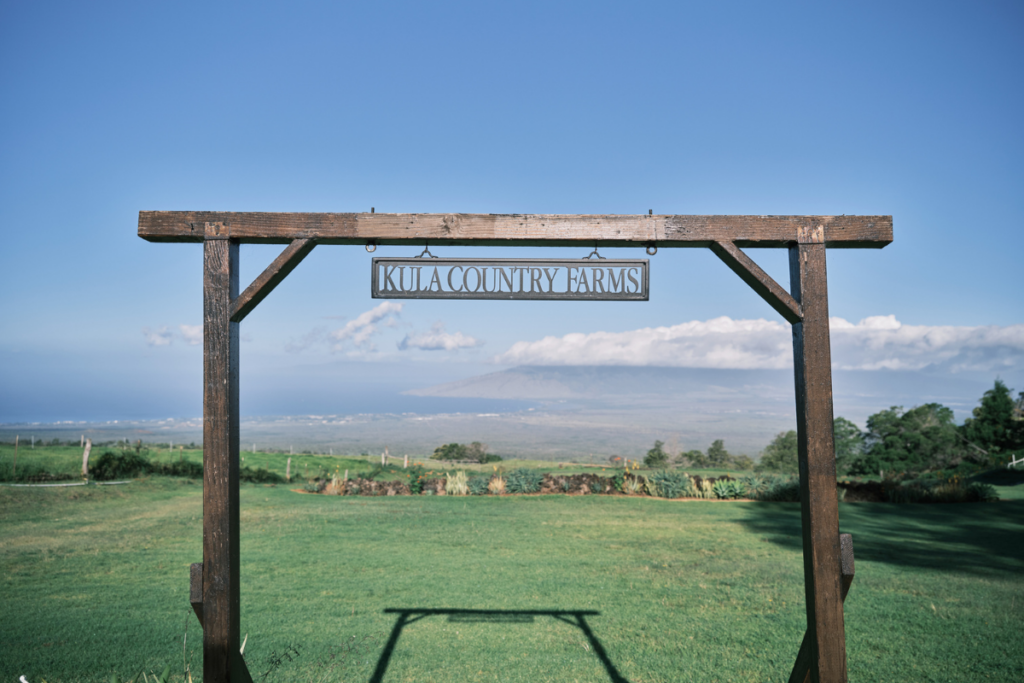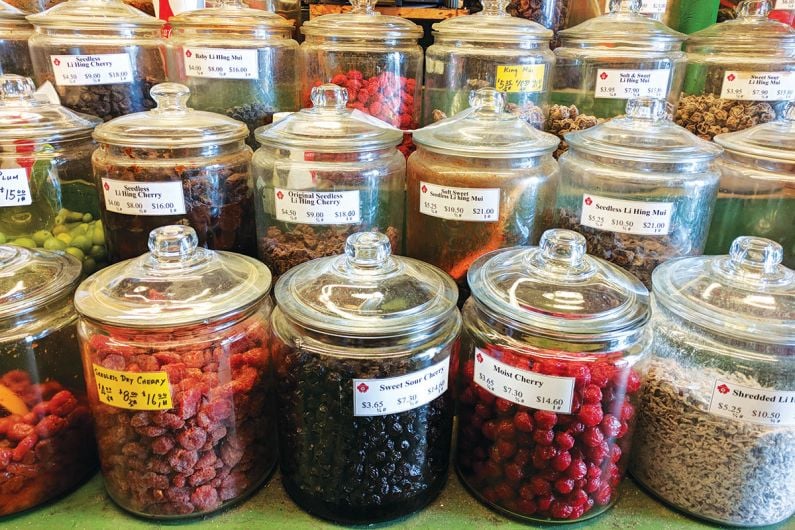Guided hikes explore volcanic features and legends in Hawaii Volcanoes National Park, March 21 and 22

Yesterday (Thurs., March 19) marked the seventh year of continuous eruption at Kilauea’s Halemaumau summit crater within Hawaii Volcanoes National Park. If you’ll be on Hawaii Island this weekend, pay the park a visit, see the lava lake from the overlook near the Jaggar Museum and consider signing up for one of two free ranger-led hikes in the park’s less-trafficked Kahuku Unit.
THE HIKES:
The guided hikes, “Hiiaka & Pele” and “Palm Trail” take place on Sat., March 21 and Sun. March 22 respectively. The hikes afford a great opportunity to explore part of the park’s 116,000-acre southernmost section on the slopes of Mauna Loa, an area that operates with limited hours and on weekends only. No advance registration for the hikes is required.
The Hiiaka & Pele guided hike will explore the area’s dynamic volcanic past. See plants eeking out an existence atop black lava rocks and learn about Pele, goddess of fire and her younger sister, Hiiaka, goddess of hula in the landscapes they represent. The easy 1.7-mile Saturday hike will run from 9:30 a.m. til 11 a.m., and will also be offered Sun, March 29 at the same time.

Sunday’s Palm Trail hike is a little more strenuous. The 2.6-mile moderately difficult loop along an ancient cinder cone promises some of the Kahuku Unit’s best panoramas. Rangers will divulge stories of the area’s ranching past, guide visitors along the remnant fissures from an 1868 lava flow and explain the importance of native forest habitat as the trail passes through a rare remaining stand. The tour runs from 9:30 til 12:30.
For both hikes, meet rangers near the parking area within the Kahuku Unit just prior the hike’s start time. You’ll find the parking lot on the mauka (inland) side of Highway 11 near mile marker 70.5.
THE ERUPTION:
Kilauea’s summit vent opened at 2:58 a.m. (Hawaii time), on March 19, 2008, when an explosive eruption created a gaping hole about 115 feet wide on the south wall of Halemaumau Crater. Nighttime glow from the hole suggested the presence of molten lava. However, it wasn’t until six months later that a lake of roiling lava deep within the vent was definitively observed by U.S. Geological Survey Hawaiian Volcano Observatory scientists.
While the actual lava lake is not visible from safe viewing areas, its glow—the “diffusion of incandescent lava light within the gas plume rising from the vent”—is easily observed from park overlooks on clear nights. When the lava lake level is especially high, park visitors can sometimes hear the sounds of rocks in the vent wall expanding and cracking due to the increased heat.
Can’t make it to the park and still want to see the summit eruption? Check out the park’s webcam here.


